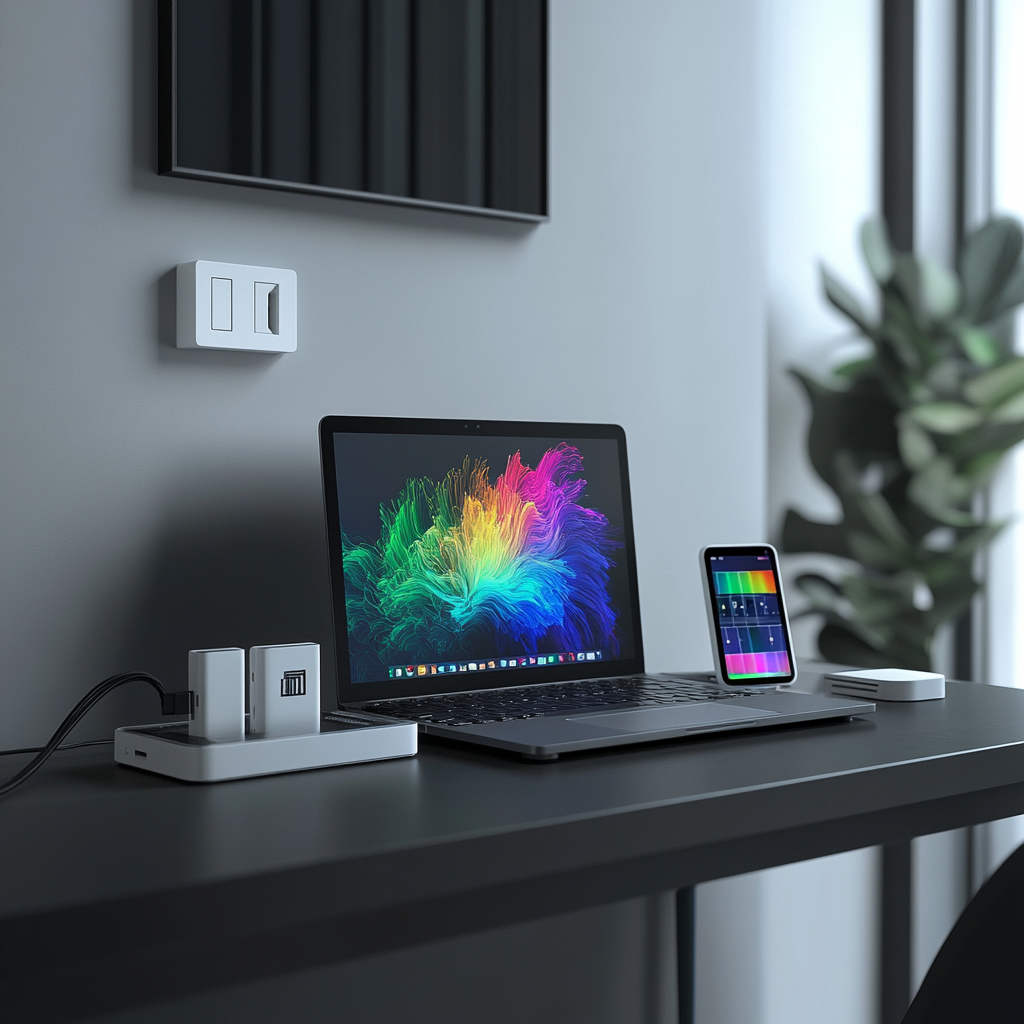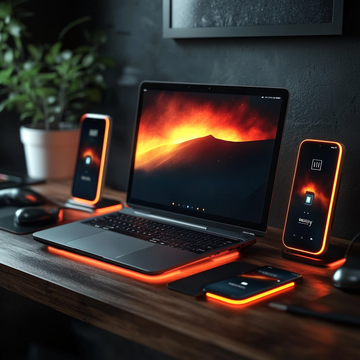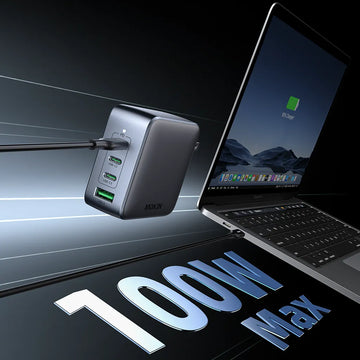Is It Safe to Use a USB-C to Charge Asus Laptops?
Contents
1. Introduction
——————————
USB-C charging is a newer technology fast replacing the traditional USB port. It is a small, reversible, versatile port that transfers data and charges devices at high speeds. But how to choose the right charger? Can I use my 100W SuperVOOC charger to charge my ASUS Vivobook Pro K3500 laptop? Can some of you guys share experiences about USB-C charging? Have you encountered any problems with incompatible chargers and devices? Today, we will delve into the topic about the safety and compatibility of USB-C charging and how to choose the right charger.

2. Understand USB-C Charging and Thunderbolt 4
——————————
Before choosing the right charger, we should first understand the relevant knowledge. Let me introduce you.
● Basic knowledge of USB-C charging:
♢ The Universality and Advantages of USB-C Port

Wide Compatibility: USB-C charging is compatible with a wide range of devices, covering almost all categories in the consumer electronics field.
Reversible Design: The USB-C port adopts a reversible design, which eliminates the need to carefully distinguish between positive and negative directions like traditional connectors, greatly improving the convenience of user use.
Support Higher Power Transmission: Being able to support power transfer of up to 100W or more is critical for devices such as high-performance laptops. For example, the Dell XPS 13 9315, with a 100W charger via USB-C interface, can quickly replenish a large amount of battery for the laptop, quickly restore its working state, and greatly improve the device's convenience and battery life.
♢ The Importance of USB Power Delivery (USB PD) Protocol

Universal Charging Solution: With USB PD, a single charger can be used to power multiple types of devices—whether it’s your phone, tablet, laptop, or other USB-C enabled gadgets. This eliminates the need for separate chargers, cutting down on clutter and making it easier to stay powered on the go.
Increased Charging Speeds: Devices that support USB PD can charge significantly faster compared to traditional USB charging methods. This is especially important for devices with larger batteries, like laptops and tablets, where traditional chargers might take hours to deliver a full charge.
Efficient Power Usage: Since USB PD allows for dynamic power negotiation, it ensures that only the necessary amount of power is delivered. This prevents energy waste, reduces heat during charging, and extends the lifespan of your battery.
Enhanced Safety: USB PD includes several safety features such as overvoltage and overcurrent protection, ensuring that devices only receive the power they are designed to handle. This reduces the risk of damage from faulty chargers or inconsistent power supplies.
Enter the article about the USB Power Delivery (USB PD) Protocol to know more about it.
● Features of Thunderbolt 4:

♢Introduction about the Features of Thunderbolt 4
Versatile Connectivity: Thunderbolt 4 are compatible with many connection standards, including previous versions of Thunderbolt™, USB, DisplayPort, and PCle. The ports fit standard USB-C Type connectors. Thunderbolt 4 is compatible with USB-C charging, but whether it supports high-power input depends on device design.
Flexibility: Some ports power your devices. Others transfer data from devices to the PC. Still others transfer video signals from your PC to an external monitor. A Thunderbolt™ port can do all three. It delivers high-speed data transfer, outputs a video signal, and can deliver power to compatible devices (including charging a lightweight laptop) simultaneously.
♢ Introduction about the ASUS Easy Charge Technology
limitation mechanism: Although the ASUS Easy Charge Technology supports 5-20V charging, the charging power may be limited according to different voltages and device conditions. For example, when charging with 5V voltage, in order to ensure charging safety and battery life, the power may be limited to a lower level and the charging speed may be relatively slow; When using a voltage of 20V, the power may increase accordingly, but it may also be unable to reach the theoretical maximum power due to factors such as the device's design and heat dissipation.
3. Analysis of 100W SuperVOOC Charger
——————————

● SuperVOOC Charging Technology:
SuperVOOC Charging Technology is mainly designed for smartphones such as Realme and OPPO, using proprietary fast charging protocols, which may have compatibility issues with USB PD. USB PD is a standardized charging protocol introduced by USB-IF. SuperVOOC uses OPPO's proprietary fast charging protocol, which differs from the USB PD protocol in terms of charging voltage, current, and handshake signal. This may result in incorrect identification and negotiation between the device and charger, making it difficult to achieve SuperVOOC's fast charging effect, and may even only be able to charge at normal charging speeds.
● Does SuperVOOC charger support USB PD?

There are two ways to confirm whether the SuperVOOC charger supports USB PD.
a. Check the technical specifications of the charger to confirm if it supports USB PD 3.0 or 2.0.
b. Observe output power allocation (whether there is 20V output and compatible with laptops).
4. Compatibility and Security Analysis
——————————
● Possible Compatibility Scenarios:
a. If the charger supports USB PD and provides 20V output, then there is a high probability that it can be safely charged.
b. Otherwise, charging power may be limited (ASUS Easy Charge may only accept 65W or lower).
● Potential Risks:
a. The charger uses proprietary protocols and may not be able to negotiate power correctly.
b. Excessive or insufficient voltage may affect charging stability.
c. Charger overheating, low charging efficiency and other issues.
5. How to Test Charging Safely?
——————————
Step 1: Check the official documentation (ASUS official website, SuperVOOC charger specifications)
Step 2: Use a power detection tool (such as a USB-C voltmeter to monitor the actual input power)
Step 3: Step by step testing (observe the charging situation in a short period of time to avoid prolonged abnormal charging)
Step 4: Pay attention to the charging status of the laptop (whether it is charging normally, whether there are errors, battery temperature)
6. Conclusion and Recommendations
——————————
a. If the charger supports USB PD and outputs appropriate voltage/power, it can be safely used.
b. If the charger only supports SuperVOOC, it may not charge correctly or there may be risks.
c. Recommend using official or certified USB PD chargers to ensure safety and optimal charging efficiency.
7. Additional Resources and Reference Materials
——————————
Introduction about USB-C Charging Protocol

MOKiN 13-IN-1 USB-C Laptop Charging Station with 2.26-inch LCD Smart Display








